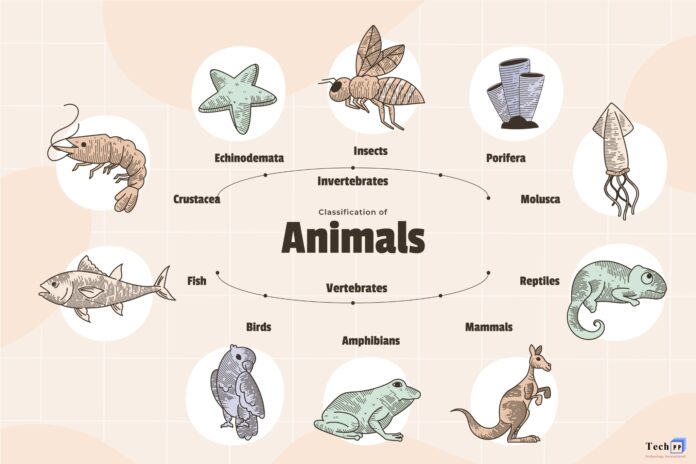While the term speciering may sound dry and technical, at the core, it refers to one of the most astonishing processes in biology – the formation of new species. It illustrates the life processes that occur across the planet. A classic instance of speciering is the evolution of birds and their various beaks. From birds to fish, speciering is omnipresent and works in the background to shape ecosystems. From the perspective of human beings, studying speciering helps us to comprehend the marvel of life and nature, human evolution, life’s resilience, and aids in understanding the need for conserving biodiversity.
What Is Speciering?
Population speciering refers to the formation of new distinct species as a result of divergence. The divergence is driven by a combination of environmental factors, genetics, and sometimes random events. Speciering accounts for the astounding diversity of life on Earth, as it explains the process of evolution over thousands, or even millions, of years.
In essence, a speciering process centers around the following three pillars:
- Variation – Each population differs from one another in some features.
- Isolation – A population needs to be separated physically or through reproduction to achieve isolation.
- Adaptation – Changes that enhance the ability to survive become more prevalent in succeeding generations.
The Drivers of Speciering
Like most evolutionary processes, speciering occurs over an extended period of time and is a consequence of the interplay between environmental and natural forces acting on populations. The most common contributors are:
- Geographic Isolation (Allopatric Speciering): The movement of populations is restricted due to the presence of physical geographical features like mountains, rivers, or oceans. Given enough time, the separated populations will evolve to adapt to different environments and eventually become separated species.
- Behavioral and Reproductive Isolation: Populations of the same species, given the same geographical range, may stop interbreeding as a result of different mating rituals or breeding seasons.
- Environmental Pressures: Changes in climate, the presence of new predators, or the availability of resources forces a given population to develop new adaptive traits.
- Genetic Drift and Mutation: Random alterations in an organism’s genetic material can lead to the emergence of new adaptive traits which will become widespread in populations if advantageous.
Examples of Speciering in Nature
Speciering, beyond being an abstract notion, can and has been documented as occurring in nature. Here are a few famous examples:
- Galapagos Islands: Darwin’s Finches: The finches that inhabited the islands distinguished themselves from one another due to the different shaped beaks that had evolved to enable them to eat the various foods found on the islands which is a classic example of speciering.
- Cichlid Fish in African Lakes: In these waters, these fishes diversified into hundreds of species, each of which is tailored to specific ecological zones.
- Polar and Brown Bears: Speciering has taken place as a result of the adaptive divergence of polar bears to the arctic environments while their relatives the brown bears thrived in forested areas.
As these examples illustrate, speciering applies to all living organisms and is, in fact, a universal mechanism which drives life’s diversity.
Why Speciering Matters
Understanding speciering has more important implications which extend beyond pure scientific inquiry:
- Biodiversity Conservation: Understanding the processes that lead to the forming of species enables scientists to work towards the protection of endangered populations, as well as estimating which populations would be the most vulnerable.
- Human Evolution: Speciering elucidates our very own origins, detailing how our early human ancestors diverged into various hominin species.
- Medicine and Agriculture: The mechanisms through which organisms respond to and adapt to diseases and climate changes give rise to numerous medicines and improvements in crops.
To put it briefly, speciering is not solely focused on the past— it also determines the future of ecosystems as well as humanity.
Misconceptions About Speciering
Regardless of the fact that speciering is crucial in comprehending other scientific concepts, it is sadly often overlooked. For instance, too many assume that speciering is a slow, gradual process. While it’s the case most of the time, studies have found that it is possible for speciering to take place rather quickly under certain circumstances.
Also, a common misconception is that speciering always results into more complex organisms. Adaptation of any organism is speciering, and it can lead to organisms that are more specialized, simpler, or just different.
Speciering and Human Influence
Human activities significantly impact speciering. Deforestation and urban expansion as well as climate change alters natural habitat which forces species to adapt rapidly. Globalization and the introduction of invasive species tend to reduce isolation which minimizes population divergence and would merge distinct populations that would otherwise speciate.
Human activities also promote artificial speciering. New varieties of crops and livestock developed through selective breeding are an example of artificial speciering. In biotechnology, genetic engineering is even capable of advancing speciering into new realms.
The Future of Speciering
The rapid change of ecosystems is a subject of concern for scientists as they have to monitor the process of speciering. Will new species emerge with the increasing climate change, or will the mass extinction of species curb the biodiversity? Such questions show that as much as we would want to understand speciering for pure science, the reality is that understanding speciering is critical for framing policy as well as strategic plans for conservation.
Questions and Answers About Speciering
Q1. The process of speciering and how long does it take?
Speciering varies across taxa; for example, cichlid fish undergo rapid speciering in a few hundred generations, while most species take thousands to millions of years.
Q2. Is physical separation always a requirement for speciering?
No. Although geographic separation is common, speciering can also stem from behavioral, ecological, or genetic isolation.
Q3: Are humans still undergoing speciering?
In a sense, yes. Even with contemporary global interconnectivity, there are subtle genetic and cultural factors that may lead to divergence in the future.
Q4: Why is speciering important for biodiversity?
By creating new life forms, speciering enriches ecosystems with new forms of life which increases adaptability to diseases and environmental shifts.
Q5: Can speciering be observed today?
Yes. Rapid speciering is observed in insects, plants, and fish, particularly in distinctive or isolated environments.
Conclusion
Speciering is one of nature’s most awe-inspiring processes that is continually shaping life on our planet. It explains how and why new species form over time, influenced by biology, environmental factors, and adaptation. Understanding the processes of speciering deepens our appreciation for the intricate web of life, as well as acknowledging our responsibility to protect it for future generations.
From Darwin’s finches to contemporary conservation biology, the narrative of speciering is a vivid reminder of the resilience and intricacies of life on Earth. Evolution is far from the dry, dusty theory found in textbooks. It is a vibrant, ongoing process that happens all around us.


